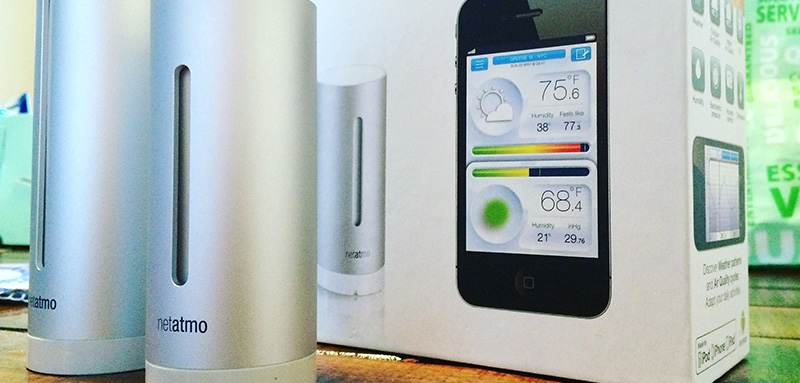I moved to the San Francisco Bay Area two years ago and quickly discovered how significant the temperature varied from community to community. Northern California is comprised of microclimates. I learned the hard way that the weather in San Francisco is completely different than the weather in Santa Cruz, which is completely different than the weather in Marin. Being from New England, I found this to be quite fascinating and wanted to learn more about the local microclimates.
I included the Netatmo Weather Station on my list of must have ‘high-tech gadget’s for the holiday season and I’m happy to report that I indeed found the device under the tree this past year.
The weather station includes an indoor and outdoor module. The outdoor module sends data to the indoor module, which is connected to your home’s WiFi. The indoor module then sends both measurements to the cloud. The data can be accessed via the native phone app or the Web.
The stations are nicely designed aluminum cylinders. In fact, the indoor module looks quite attractive in my living room. Installation and configuration was a breeze and only took a few minutes to connect to my home network.
The outdoor station is pretty standard. It measures temperature, humidity and barometric pressure. The device currently resides on my patio. However, the temperature being reported is about 5 degrees warmer than the actual temperature. I believe this is due to the module absorbing too much direct sunlight. I will need to relocate the module to a shadier spot.
The outdoor station is pretty cool but I’ve become obsessed with the indoor module. The module measures temperature, humidity, noise, air quality and CO2. CO2 is measured via a sensor and Netatmo will ping your mobile device when CO2 reaches an unhealthy level, prompting you to air out your home.
The EPA (United States Environmental Protection Agency) defines Carbon Dioxide (CO2): “as a colorless, odorless, non-poisonous gas that is a normal part of the ambient air. Carbon dioxide is a product of fossil fuel combustion. Although carbon dioxide does not directly impair human health, it is a greenhouse gas that traps terrestrial (i.e., infrared) radiation and contributes to the potential for global warming.”
Netatmo breaks-down CO2 levels into 3 categories:
1: Very good: 425ppm (parts per million)
2: Average: 1180ppm
3: Warning – Air should be ventilated: 2250ppm

I noticed the CO2 levels in my home seem to fluctuate considerably. My hypothesis for this fluctuation is that when the temperature drops outside, we close the windows and turn on the heat, resulting in higher CO2 levels. I decided to connect the raw data that the Netatmo Weather Station records and connect it to Google Charts so I can easily visualize the metrics.
Here is the data from 2/2/2016 – 2/6/2016:
Interestingly enough, the warmer it got outside, the higher the CO2 levels were inside. To further test my hypothesis, I’m going to publish the historical data from the weather station next.

